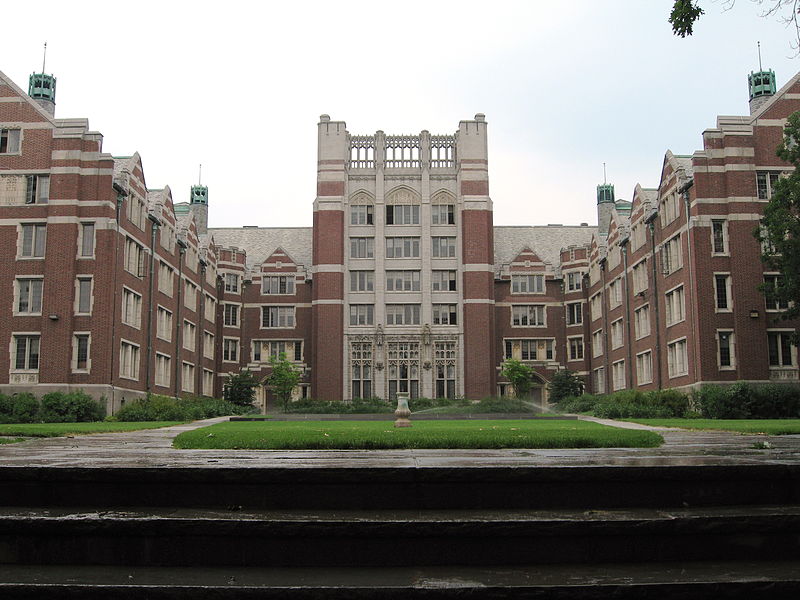
Photo: Wellesley College. Retrieved from: www.wikipedia.org
Wellesley College has a reputation of producing some of the top female CEOs of Fortune 500 companies; this isn’t surprising, because the all-female college has maintained high academic standards from the time of its founding until the present. This moderately selective school located in Wellesley, Massachusetts is home to close to 3,000 undergraduates, all of whom have their pick of majors offered by 32 academic departments. Students also have the option of selecting from 22 interdepartmental majors, or can design their own major.
Professor-student interaction is maximized as the class sizes are small enough to encourage discussion. Class sizes don’t exceed 25 students, and the ratio of faculty members to students is 1:9. Wellesley houses an extensive array of cataloged books, including maps, academic journals and media recordings. Students don’t have to stray from the campus to do their research, although Wellesley allows cross-registrations with nearby colleges and universities such as Harvard University and Massachusetts Institute of Technology. Wellesley also offers collaborative research opportunities with other institutions around Boston such as Babson and Olin colleges, and Brandeis University. Wellesley has several teams participating in the NCAA Division III’s New England Women’s Athletic Conference.
Wellesley has developed a program designed for women over 24 years old that wish to pursue a college education. Specifically engineered to support a variety of backgrounds and statuses, the program is open to all women over 24 who qualify for admission.
School History
In 1870, Wellesley College was established by husband and wife Henry and Pauline Durant. The school was chartered in 1870 as the Wellesley Female Seminary. In 1873, the school was renamed to Wellesley College, and the school was finally opened in 1875.
The architectural masterpieces around the campus tell of the school’s rich history. Originally, the college comprised only one large building; College Hall. This hall served both as the academic building and residence of students from 1875 to 1914. The hilltop where the College Hall used to be has been replaced by a cluster of residences known as Tower Court. A famous landmark, Galen L. Stone Tower, houses a 32-bell carillon. The tower is atop an equally historic landmark, Green Hall, which is named after Hetty Green, the famed miserly “witch” of Wall Street in her time.
Campus Life
Wellesley is wrapped in beauty. The maintenance of the grounds and the architecture is impeccable, and there’s no shortage of inspiration all around the campus. Students live in the dorms, which are as homey as residence halls can be. There is a natural camaraderie among the students, and an atmosphere of a shared desire to reach full academic potential. Many of the students are self-driven, independent women, and encouraging to new students.
Room charges include heating, but not air conditioning. This may be because students need a heater more than an air conditioner, but there are some months when the weather is unusually warm. Some students opt to bring an electric fan or two, which is usually enough for one room’s ventilation when the weather is on the warm side.
Food in most of the campus dining halls has been rated from good to great, and there are plenty of dishes to choose from. Students with limitations on what they can eat due to diet plans, allergies or religious beliefs won’t have trouble finding food that they can enjoy. There is also no shortage of good restaurants to go to in Wellesley, and many restaurants deliver food to the campus.
Financial Aid
Wellesley’s Student Financial Services is efficient and supportive when it comes to helping a student’s family pay for a Wellesley education. Another option for financially needy students is to do part-time work to cover the miscellaneous expenses not included in the grants or scholarships offered through the school. There are also sponsored programs that allow students to study abroad while paying only what they would normally pay at the main campus as food stipends and living allowance are usually covered by the sponsor organization.
